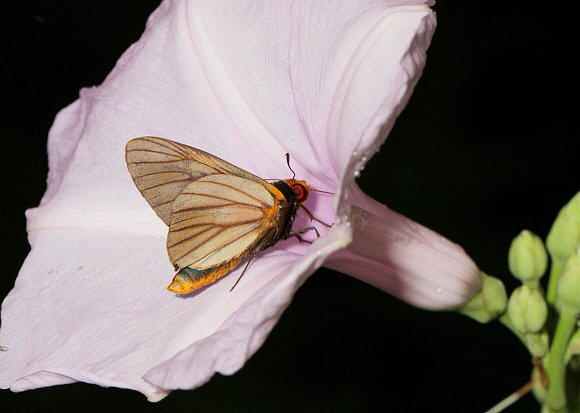
Introduction
The 9 largish members of the genus Pteroteinon are all west African in distribution.
In common with several crepuscular / nocturnal skipper genera from other regions of the world, Pteroteinon species all have red eyes – possibly a factor that helps them to see better in the dark.
Pteroteinon laufella can easily be distinguished from related species by the presence of a slightly metallic blue-green sheen on the upper surface of it’s wings.
The Blue Red-eye is found from Sierra Leone to Congo and Angola.
Habitats
This is a rainforest species, but it is quite tolerant of habitat degradation, and is quite common in relatively open area such as clearings and larger glades.
Lifecycle
The larvae feed on the leaves of oil palm Elaeis, and on coconut Cocos.
Adult behaviour
The butterfly is usually encountered singly. It can sometimes be disturbed from its resting places in the forest undergrowth during the day, in which case it darts off rapidly but quickly resettles a few metres away. The main period of activity however begins at dusk, when the butterfly can be seen whirring from flower to flower around forest glades. Before long it locates an Ipomoea – a common member of the Convolvulaceae with deep trumpet-like pink flowers. After a second or two it crawls right into the flower to reach the nectaries, until it almost disappears from view. It remains within the flower, feeding avidly until the petals close around it, providing it with a safe haven for the night. At dawn the next day the flowers gradually reopen, and the warmth of the sun arouses the butterfly, persuading it to leave and seek a hiding place in the shade of the forest.

